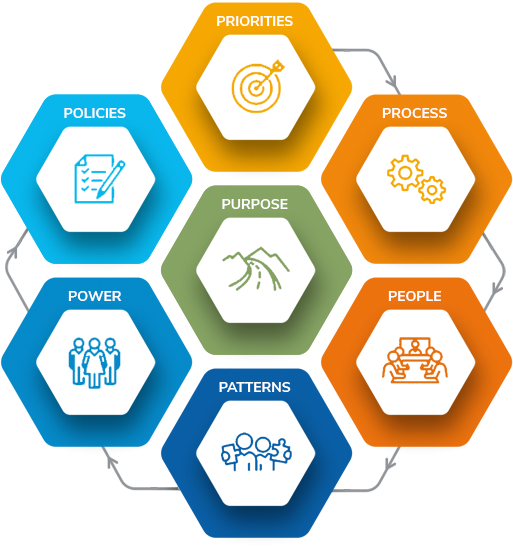The DNA of the Organization
Organizations are dynamic interdependent entities. They operate as a system with each of the component parts (or the DNA of the organization) reinforcing and either strengthening or weakening the other parts around it. When in good alignment, they make the organization more resilient and successful in an ever-changing business environment. When misaligned, the reverse is true.
To achieve your vision or strategy or to create a new culture, you need to adjust the misaligned components and allow the system to rebalance and sustain itself. Taking this wider perspective and continuously assessing the results of your actions on the whole system, or the impacts, is important. If you change any one element in isolation, it may not help and may even hurt the performance of the organization. Below are the various components that make up an organization’s DNA or culture.

